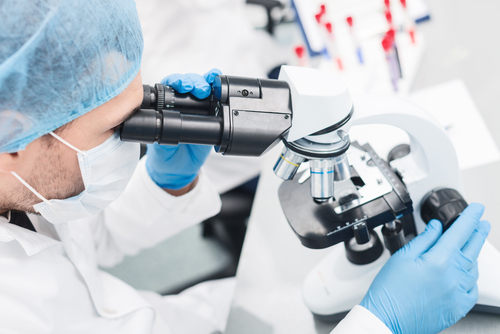RUNX2 Protein Plays Different Roles in Two Lung Cell Types’ Contribution to Fibrosis, Study Reports

A protein called RUNX2 contributes to lung tissue scarring, which makes it a good target for the development of a pulmonary fibrosis treatment, a study reported.
It does this differently in two types of lung cells, suggesting that scientists might need to develop therapies that targeted each of the cell types, the researchers said.
The study, “Cell-specific expression of runt-related transcription factor 2 contributes to pulmonary fibrosis,” appeared in The FASEB Journal.
Scientists have yet to determine what causes idiopathic pulmonary fibrosis, or IPF. One factor in its development, they believe, is lung tissue injury that worsens over time and that leads to an abnormal tissue repair process. At the heart of the abnormal process is over-activation of the cells involved in repair, scientists believe. This causes the cells to release pro-fibrotic factors, such as transforming growth factor (TGF)-beta.
Regulators have recently approved two treatments for IPF — Boehringer Ingelheim’s Ofev (nintedanib) and Genentech’s Esbriet (pirfenidone. They can only slow lung function decline, however.
Scientists would like to develop more encompassing therapies. Before they can identify new treatment targets, however, they need a better understanding of the mechanisms underlying IPF.
A team led by researchers at Ludwig Maximilians University München in Germany wanted to see if there were a connection between RUNX2 levels in lung tissue and IPF.
They discovered that levels of RUNX2 were higher in lung tissue samples collected from 37 IPF patients than in 16 samples collected from patients with no lung fibrosis.
An additional analysis of RUNX2 levels in 122 IPF patients and 91 controls confirmed the initial findings. It also showed a correlation between levels of RUNX2 and two biomarkers of IPF — MMP7 (matrix metalloproteinase 7) and SPP1 (osteopontin).
Researchers then tried to determine which cells were responsible for increased levels of RUNX2. They re-analyzed the lung tissue samples from IPF patients and healthy donors, and examined tissue samples collected from mice with IPF.
They found that RUNX2 levels were considerably higher in the alveolar epithelial cells of lungs that had been scarred than in lung fibroblasts. Epithelial cells line the alveoli, or air sacs, at the end of the lungs’ respiratory tree. Fibroblasts are connective-tissue cells.
The finding that RUNX2 levels are higher in epithelial cells than in fibroblasts seemed contradictory, researchers said, because fibroblasts are the cells that drive the scarring process.
As they looked closer, they discovered that RUNX2 plays different roles in each cell type’s contribution to fibrosis. Higher levels of RUNX2 in epithelial cells were associated with the spread of fibrosis, while in fibroblasts they were associated with the activation of fibrosis-promoting biomarkers.
Overall, the results suggested that the different levels of RUNX2 in the two cell types contribute to the progression of fibrosis when lung tissue has been damaged.
“Cell-specific targeting of RUNX2 pathways may represent a therapeutic approach for IPF,” the study concluded.







